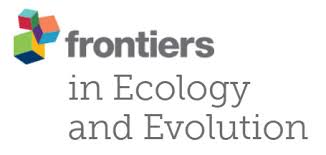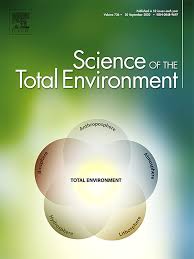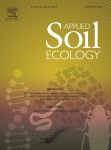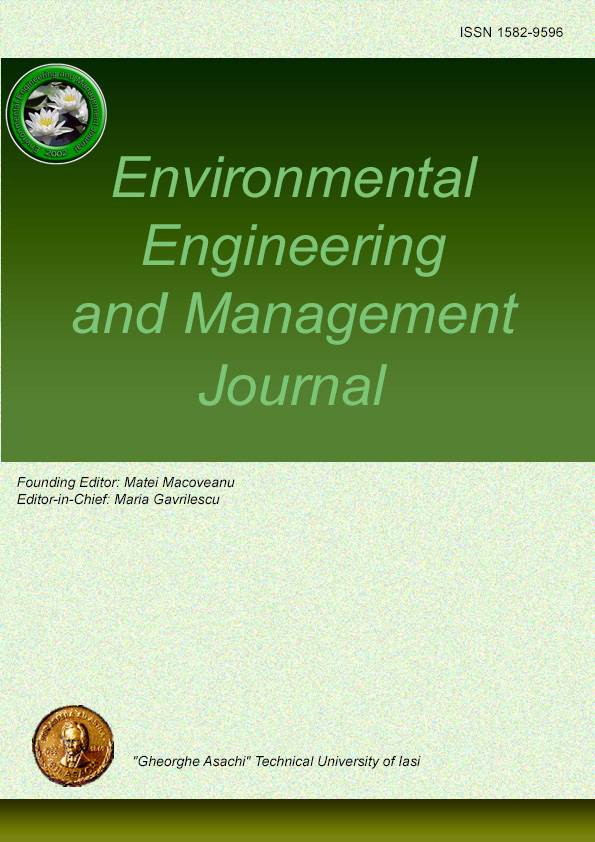
You are here
Documents
Over the years, the JRC has produced many publications. These are found in this section. They have been sub-divided in various categories (see Subcategory buttons below). All more than 550 documents can also be inspected irrespective of the category (see 'All documents' below).
Publications in Journals include more than 390 published papers from the Soil Group in the JRC (EU Soil Observatory). Most of the papers refer to the last 10 years (2013-2023). In many cases the papers document the datasets published in ESDAC.
As example statistics, Since the establishement of the EUSO, the group published:
- 23 papers in 2020,
- 27 papers in 2021
- 40 papers in 2022
- 46 papers in 2023
Most of them in high impact journals including Nature Communicaitons, Climate Change, Global Change Biology, etc. Almost all the publications are Open Access. As publications, we present articles published in peer-review journals indexed in Scopus or Web of Science.
All Documents

|
Pedotransfer functions for predicting organic carbon in subsurface horizons of European soils |
|
|
Resource Type: Documents, Publications in Journals, Maps & Documents |
Year: 2017 |
|
|
|
||
|
|
||

|
Complementing the top soil information of the Land Use/Land Cover Area Frame Survey (LUCAS) with modelled N2O emissions |
|
|
Resource Type: Documents, Publications in Journals, Maps & Documents |
Year: 2017 |
|
|
|
||
|
|
||

|
Discovering historical rainfall erosivity with a parsimonious approach: A case study in Western Germany |
|
|
Resource Type: Documents, Publications in Journals, Maps & Documents |
Year: 2017 |
|
|
|
||
|
|
||

|
Optimizing the delivery of multiple ecosystem goods and services in agricultural systems |
|
|
Resource Type: Documents, Publications in Journals, Maps & Documents |
Year: 2017 |
|
|
|
||
|
|
||

|
Topological data analysis (TDA) applied to reveal pedogenetic principles of European topsoil system |
|
|
Resource Type: Documents, Publications in Journals, Maps & Documents |
Year: 2017 |
|
|
|
||
|
|
||

|
Towards estimates of future rainfall erosivity in Europe based on REDES and WorldClim datasets |
|
|
Resource Type: Documents, Publications in Journals, Maps & Documents |
Year: 2017 |
|
|
|
||
|
|
||

|
A New Assessment of Soil Loss Due to Wind Erosion in European Agricultural Soils Using a Quantitative Spatially Distributed Modelling Approach |
|
|
Resource Type: Documents, Publications in Journals, Maps & Documents |
Year: 2017 |
|
|
|
||
|
|
||

|
An assessment of the global impact of 21st century land use change on soil erosion |
|
|
Resource Type: Documents, Publications in Journals, Maps & Documents |
Year: 2017 |
|
|
|
||
|
|
||

|
Storage and stability of biochar-derived carbon and total organic carbon in relation to minerals in an acid forest soil of the Spanish Atlantic area |
|
|
Resource Type: Documents, Publications in Journals, Maps & Documents |
Year: 2017 |
|
|
|
||
|
|
||

|
Soil Functions in Earth’s Critical Zone: Key Results and Conclusions |
|
|
Resource Type: Documents, Publications in Journals, Maps & Documents |
Year: 2017 |
|
|
|
||
|
|
||

|
Soil threats in Europe: Status, methods, drivers and effects on ecosystem services |
|
|
Resource Type: Maps & Documents, Documents, Scientific-Technical Reports |
Author: Jannes Stolte, Mehreteab Tesfai, Lillian Øygarden, Sigrun Kværnø (NIBIO), Jacob Keizer, Frank Verheijen (University of Aveiro), Panos Panagos, Cristiano Ballabio (JRC), Rudi Hessel (Alterra WUR) Year: 2016 |
|
|
|
||
|
|
||

|
LUCAS Soil Component: proposal for analysing new physical, chemical and biological soil parameters |
|
|
Resource Type: Maps & Documents, Documents, Scientific-Technical Reports |
Author: Fernández-Ugalde O., Jones A., Tóth G., Orgiazzi A., Panagos P., Eiselt B. Year: 2016 Publisher: European Commission, Joint Research Centre Language: en |
|
|
|
||
|
|
||

|
Assessment of soil organic carbon stocks under future climate and land cover changes in Europe |
|
|
Resource Type: Maps & Documents, Documents, Publications in Journals |
Year: 2016 |
|
|
|
||
|
|
||

|
Mapping earthworm communities in Europe |
|
|
Resource Type: Documents, Publications in Journals, Maps & Documents |
Year: 2016 |
|
|
|
||
|
|
||

|
Selection of biological indicators appropriate for European soil monitoring |
|
|
Resource Type: Documents, Publications in Journals, Maps & Documents |
Year: 2016 |
|
|
|
||
|
|
||

|
A knowledge-based approach to estimating the magnitude and spatial patterns of potential threats to soil biodiversity |
|
|
Resource Type: Documents, Publications in Journals, Maps & Documents |
Year: 2016 |
|
|
|
||
|
|
||

|
A method of establishing a transect for biodiversity and ecosystem function monitoring across Europe |
|
|
Resource Type: Documents, Publications in Journals, Maps & Documents |
Year: 2016 |
|
|
|
||
|
|
||

|
Quantifying the erosion effect on current carbon budget of European agricultural soils at high spatial resolution |
|
|
Resource Type: Documents, Publications in Journals, Maps & Documents |
Year: 2016 |
|
|
|
||
|
|
||

|
The LUCAS 2012 TOPSOIL survey and derived cropland and grassland soil properties of Bulgaria and Romania |
|
|
Resource Type: Documents, Publications in Journals, Maps & Documents |
Year: 2016 |
|
|
|
||
|
|
||

|
Towards a pan-European assessment of land susceptibility to wind erosion |
|
|
Resource Type: Documents, Publications in Journals, Maps & Documents |
Year: 2016 |
|
|
|
||
|
|
||

|
Soil conservation in Europe: Wish or Reality? |
|
|
Resource Type: Documents, Publications in Journals, Maps & Documents |
Year: 2016 |
|
|
|
||
|
|
||

|
Mapping regional patterns of large forest fires in the Wildland-Urban Interface areas in Europe |
|
|
Resource Type: Documents, Publications in Journals, Maps & Documents |
Year: 2016 |
|
|
|
||
|
|
||

|
Rainfall erosivity in Italy: A national scale spatio-temporal assessment |
|
|
Resource Type: Documents, Publications in Journals, Maps & Documents |
Year: 2016 |
|
|
|
||
|
|
||

|
Maps of heavy metals in the soils of the European Union and proposed priority areas for detailed assessment |
|
|
Resource Type: Documents, Publications in Journals, Maps & Documents |
Year: 2016 |
|
|
|
||
|
|
||
|
|
Monthly Rainfall Erosivity: Conversion Factors for Different Time Resolutions and Regional Assessments |
|
|
Resource Type: Documents, Publications in Journals, Maps & Documents |
Year: 2016 |
|
|
|
||
|
|
||